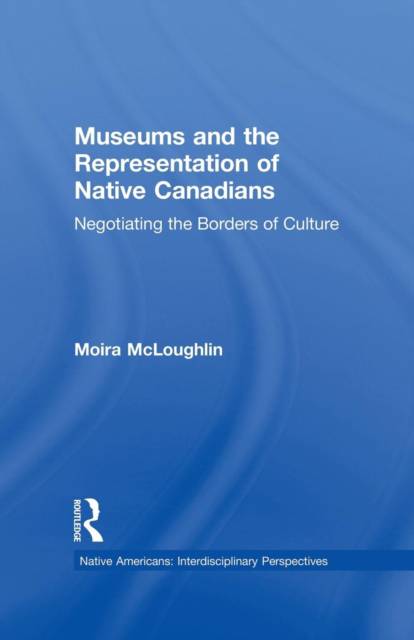
- Afhalen na 1 uur in een winkel met voorraad
- Gratis thuislevering in België vanaf € 30
- Ruim aanbod met 7 miljoen producten
- Afhalen na 1 uur in een winkel met voorraad
- Gratis thuislevering in België vanaf € 30
- Ruim aanbod met 7 miljoen producten
Museums and the Representation of Native Canadians
Negotiating the Borders of Culture
Moira McLoughlinOmschrijving
If we were to think about museums as three dimensional maps-as spaces to be divided, defended, and privileged-what would they tell us about the place of Native Canadians within the larger nation? Utilizing a combination of exhibit analysis and interviews, this book explores how Canadian history, anthropology, and art museums have situated Native Canadian history and culture within a larger narrative of nationhood. Until very recently, these museums have, with few exceptions, perpetuated the continued isolation of Native Canadians on the Other side of carefully demarcated boundaries of time, space, and culture. Despite a living and highly politicized presence outside their walls, inside these museums Native Canadians have remained fixed and isolated in time and space. This book discusses how this particular image of Native Canadians has been translated into the numerous dichotomies and borders of the museum; between modern and traditional, past and present, myth and science, progress and stasis, active and passive, and, ultimately, us and them.
However, in tribal museums and more recent programming at the larger museums we are able to identify alternative maps that realign these borders and give voice to alternative constructions of these histories. The past decade has seen enormous change in how museum curators, educators, and directors imagine their role in these museums and, more particularly, in the construction of a history of Native Canadians. This book considers how museums, and those who work within them, have responded to the challenge of writing a more complex and multivocal history for the nation.
(Ph.D. dissertation, the Annenberg School for Communication, University of Pennsylvania, 1992; revised with new preface, bibliography, and index)
Specificaties
Betrokkenen
- Auteur(s):
- Uitgeverij:
Inhoud
- Aantal bladzijden:
- 318
- Taal:
- Engels
- Reeks:
Eigenschappen
- Productcode (EAN):
- 9781138864566
- Verschijningsdatum:
- 23/06/2015
- Uitvoering:
- Paperback
- Formaat:
- Trade paperback (VS)
- Afmetingen:
- 140 mm x 216 mm
- Gewicht:
- 371 g

Alleen bij Standaard Boekhandel
Beoordelingen
We publiceren alleen reviews die voldoen aan de voorwaarden voor reviews. Bekijk onze voorwaarden voor reviews.









